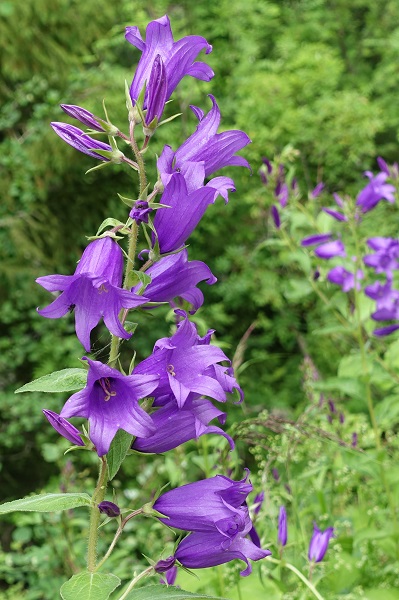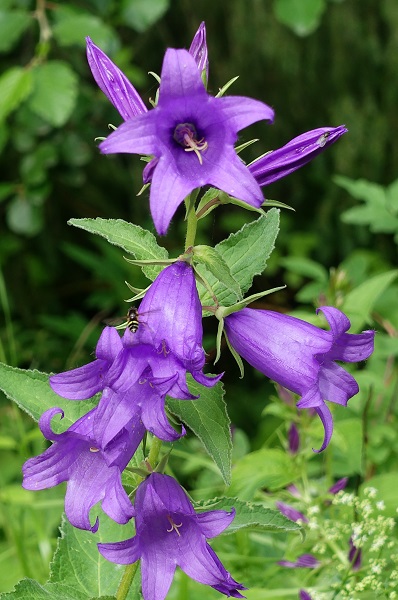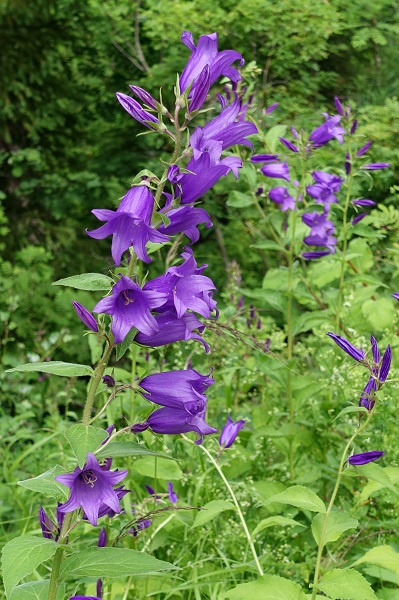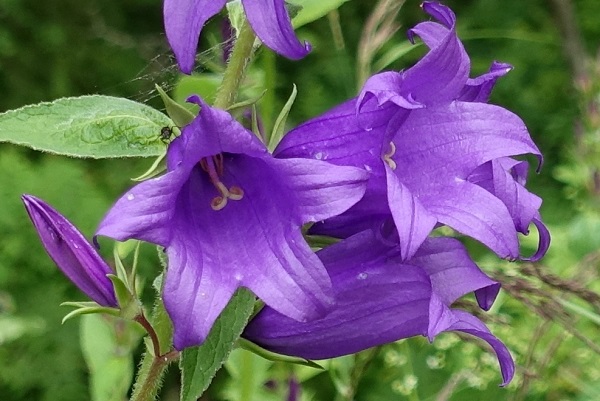
| Scientific name: | Campanula latifolia L. | |
| Swedish name: | Hässleklocka | |
| German name: | Breitblättrige Glockenblume | |
| Nederlandse naam: | Breed klokje | |
| English name: | Giant bellflower, Large campanula, Wide-leaved bellflower | |
| Family: | Campanulaceae, Bellflower family, Klockväxter |

|
| Life form: | Perennial | |
| Stems: | Height 60-120cm, unbranched, erect and shortly pubescent | |
| Leaves: | Alternate, lanceolate, dentate, petiolate | |
| Flowers: | Many-flowered terminal raceme, bell-shaped, corolla pubescent with five dark violet-blue fused petals | |
| Flowering Period: | July- August | |
| Fruits: | Hairy, nodding capsule | |
| Habitat: | Groves, cultivated land | |
| Distribution: | Southern Sweden up to Uppland, also found farther north |
 Derivation of the botanical name: Campanula is diminutive of Late Latin campāna, bell (New Latin: a little bell). latifolia, latus,"broad", and folius, "leaf"; hence, "broad leaf."
  |